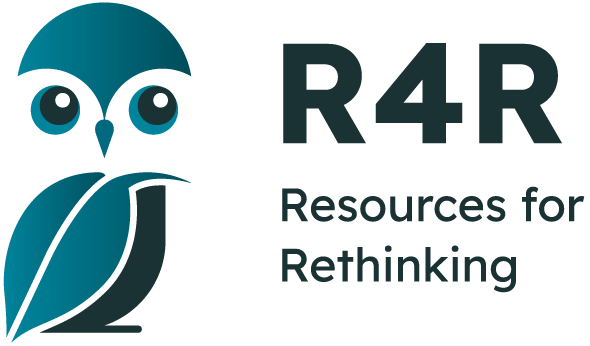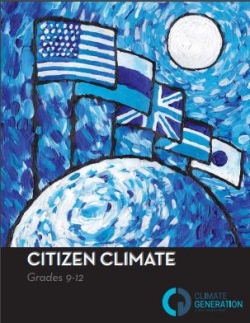- Home
- Tutorial
- Resource Guides
- Focus Areas
- LSF Programs
-
Professional
Development - Review Process
-
A project of LSF

Search for Resources
Description
This resource examines the scientific basis for urgent action on climate change as well as the social, economic and political implications of the policy formed in response. Students view selected videos, read and discuss scientific reports, articles and blogs, conduct research and participate in different role playing activities to better understand what goes into climate policy and negotiation. Topics explored include the carbon cycle, carbon budgets, climate targets, and the roles of technology, carbon tax and cap and trade in climate change mitigation and international climate negotiation. Upon completion students will be well-equipped to evaluate media coverage of climate change policy and to take steps to make their opinions heard.
Each of the eight lessons in the resource provides a detailed implementation plan and the information and materials needed to complete the activities.
General Assessment
What skills does this resource explicitly teach?
- systems thinking
- detecting bias
- building consensus
- letter writing
- presentation skills
Strengths
The resource is thorough and the activities easy to implement. All materials needed to complete the lessons are included and there is a good deal of support for both teacher and student.
The resource encourages systems thinking and students are given lots of opportunities to articulate their own views and opinions.
The resource includes both strong learning and action components.
Recommendation of how and where to use it
The resource will be most effective once students have a firm understanding of the causes and consequences of global warming.
Relevant Curriculum Units
The following tool will allow you to explore the relevant curriculum matches for this resource. To start, select a province listed below.
- Step 1Select a province
- Alberta
- Step 2Select a grade level
- Grade 11
- Step 3Select a subject
- Social Studies
- Step 4Relevant matches
- Social Studies 20-2:Understanding of Nationalism: Internationalism in contemporary global affairs
- Social Studies 20-4:Nationalism in Canada & the World- Internationalism
- British Columbia
- Step 2Select a grade level
- Grade 11
- Step 3Select a subject
- Environmental Science
- Step 4Relevant matches
- Environmental Science 11:Humans can play a role in stewardship and restoration of ecosystems
- Grade 12
- Step 3Select a subject
- Environmental Science
- Step 4Relevant matches
- Environmental Science 12: Human activities cause changes in the global climate system
- Manitoba
- Step 2Select a grade level
- Grade 10
- Step 3Select a subject
- Science
- Step 4Relevant matches
- Earth Science
- Senior 2 Science: Dynamics of Ecosystems
- Grade 12
- Step 3Select a subject
- Science
- Step 4Relevant matches
- Interdisciplinary Topics in Science 40S: Science, Technology, Society and the Environment
- Social Studies
- Step 4Relevant matches
- Citizenship and Sustainability: Area of Inquiry: Environment
- Global Issues
- New Brunswick
- Step 2Select a grade level
- Grade 12
- Step 3Select a subject
- Environmental Science
- Step 4Relevant matches
- Advanced Environmental Science 120:Introduction to the human sphere
- Social Studies
- Step 4Relevant matches
- World Issues 120: Geopolitics
- World Issues 120:Interdependence
- Newfoundland & Labrador
- Step 2Select a grade level
- Grade 10
- Step 3Select a subject
- Geography
- Step 4Relevant matches
- Canadian Geography 1202: Global Issues n Canadian Geography
- Grade 12
- Step 3Select a subject
- Environmental Science
- Step 4Relevant matches
- Environmental Science 3205: The Atmosphere and the Environment
- Northwest Territories
- Step 2Select a grade level
- Grade 11
- Step 3Select a subject
- Civic Studies
- Step 4Relevant matches
- Challenges in the Global Environment
- Environmental Science
- Step 4Relevant matches
- Environmental Science 11:Humans can play a role in stewardship and restoration of ecosystems
- Grade 12
- Step 3Select a subject
- Environmental Science
- Step 4Relevant matches
- Environmental Science 12: Human activities cause changes in the global climate system
- Nova Scotia
- Step 2Select a grade level
- Grade 9
- Step 3Select a subject
- Social Studies
- Step 4Relevant matches
- Citizenship 9: Engaged Citizenship
- Grade 10
- Step 3Select a subject
- Science
- Step 4Relevant matches
- Science 10: Sustainability of Ecosystems
- Grade 12
- Step 3Select a subject
- Political Science
- Step 4Relevant matches
- Global Politics 12: Global Citizen
- Nunavut
- Step 2Select a grade level
- Grade 11
- Step 3Select a subject
- Social Studies
- Step 4Relevant matches
- Social Studies 20-1:Perspectives on Nationalism : Internationalism & Global Affairs
- Social Studies 20-2:Understanding of Nationalism: Internationalism in contemporary global affairs
- Ontario
- Step 2Select a grade level
- Grade 9
- Step 3Select a subject
- Science
- Step 4Relevant matches
- :Biology: Sustainable Ecosystems
- Grade 10
- Step 3Select a subject
- Science
- Step 4Relevant matches
- Science (Academic):Earth and Space Science: Climate Change
- Grade 11
- Step 3Select a subject
- Environmental Science
- Step 4Relevant matches
- Environmental Science (Univ/College Prep.) Scientific Solutions to Contemporary Environmental Challenges
- Environmental Science (Workplace Prep.) Human Impact on the Environment
- Geography
- Step 4Relevant matches
- Impacts of Change
- Forces of Nature: Physical Processes and Disasters (Univ./College Prep.)
- Regional Geography (Univ./College Prep.) Dynamics and Change
- Grade 12
- Step 3Select a subject
- Geography
- Step 4Relevant matches
- World Issues: A Geographic Analysis (College Prep.):Sustainability and Stewardship
- World Issues: A Geographic Analysis (Univ. Prep.):Sustainability and Stewardship
- Political Science
- Step 4Relevant matches
- Canadian and International Politics (Univ. Prep.) Non-governmental Action on Canadian and International Political Issues
- Prince Edward Island
- Step 2Select a grade level
- Grade 9
- Step 3Select a subject
- Social Studies
- Step 4Relevant matches
- Interdependence: Atlantic Canada in the Global Community: Environment in the Global Community
- Grade 10
- Step 3Select a subject
- Geography
- Step 4Relevant matches
- Geography of Canada 421A: Canada’s Global Connections
- Grade 11
- Step 3Select a subject
- Political Science
- Step 4Relevant matches
- Policy Issues
- Grade 12
- Step 3Select a subject
- Environmental Science
- Step 4Relevant matches
- Environmental Science 621A: Environmental Challenges and Successes
- Geography
- Step 4Relevant matches
- Geography 621A Global Issues: Introduction- What is a global issue?
- Geography 631A Global Issues: Introduction - What Is a Global Issue
- Political Science
- Step 4Relevant matches
- Policy Issues
- Quebec
- Step 2Select a grade level
- Grade 9
- Step 3Select a subject
- Social Studies
- Step 4Relevant matches
- The Contemporary World: Environment
- Grade 11
- Step 3Select a subject
- Social Studies
- Step 4Relevant matches
- Contemporary World: Environment
- Saskatchewan
- Step 2Select a grade level
- Grade 11
- Step 3Select a subject
- Environmental Science
- Step 4Relevant matches
- Environmental Science 20: Atmosphere and Human Health
- Social Studies
- Step 4Relevant matches
- Social Studiees 20:World Issues - Environment
- Yukon Territory
- Step 2Select a grade level
- Grade 11
- Step 3Select a subject
- Environmental Science
- Step 4Relevant matches
- Environmental Science 11:Humans can play a role in stewardship and restoration of ecosystems
- Grade 12
- Step 3Select a subject
- Environmental Science
- Step 4Relevant matches
- Environmental Science 12: Human activities cause changes in the global climate system
Themes Addressed
Air, Atmosphere & Climate (1)
- Climate Change
Governance (1)
- International Relations
Sustainability Education Principles
| Principle | Rating | Explanation |
|---|---|---|
| Consideration of Alternative Perspectives | Very Good | A key objective of the resource is to illustrate the many perspectives and considerations that surround climate policy. Students are required to formulate and express their own viewpoints and conclusions. |
Consideration of Alternative Perspectives:
| ||
| Multiple Dimensions of Problems & Solutions | Very Good | Exploring the environmental, social and economic aspects of climate change policy is a key component of the resource. |
| Multiple Dimensions of Problems & Solutions: Effectively addresses the environmental, economic and social dimensions of the issue(s) being explored.
| ||
| Respects Complexity | Good | |
| Respects Complexity: The complexity of the problems/issues being discussed is respected. | ||
| Acting on Learning | Good | Students are guided through the process of taking a position and acting on it through a formal letter-writing process. The action is informed, personally motivated and well supported by the resource. |
| Acting on Learning: Learning moves from understanding issues to working towards positive change — in personal lifestyle, in school, in the community, or for the planet
| ||
| Values Education | Very Good | Reflecting on and responding to what is being learned is a point of emphasis throughout the lessons. |
| Values Education: Students are explicitly provided with opportunities to identify, clarify and express their own beliefs/values. | ||
| Empathy & Respect for Humans | Satisfactory | The lesson and simulation concerning international climate negotiations raise issues relating to equity among different populations and nations. |
| Empathy & Respect for Humans: Empathy and respect are fostered for diverse groups of humans (including different genders, ethnic groups, sexual preferences, etc.). | ||
| Personal Affinity with Earth | Good | The urgency and extent of the problem climate change is causing for the earth and its inhabitants is made clear and relevant. |
| Personal Affinity with Earth: Encourages a personal affinity with -the natural world.
| ||
| Locally-Focused Learning | Good | The nature of the discussion surrounding climate policy and negotiations is highly relevant to students given both its importance and prominence in the media. The role-play and letter-writing activities further connect students personally to the learning. |
| Locally-Focused Learning: Includes learning experiences that take advantage of issues/elements within the local community.
| ||
| Past, Present & Future | Satisfactory | The resource encompasses a time period from Kyoto through the present and it supports student action towards a better future. |
| Past, Present & Future: Promotes an understanding of the past, a sense of the present, and a positive vision for the future. | ||
Pedagogical Approaches
| Principle | Rating | Explanation |
|---|---|---|
| Open-Ended Instruction | Very Good | The resource avoids advocating any one position on climate policy. The lessons address different perspectives and students draw their own conclusions. |
| Open-Ended Instruction
: Lessons are structured so that multiple/complex answers are possible; students are not steered toward one 'right' answer. | ||
| Integrated Learning | Good | This is a resource that will support outcomes in environmental science, geography, international relations & world issues. |
| Integrated Learning: Learning brings together content and skills from more than one subject area
| ||
| Inquiry Learning | Satisfactory | |
| Inquiry Learning: Learning is directed by questions, problems, or challenges that students work to address.
| ||
| Differentiated Instruction | Satisfactory | There are a number of different teaching/learning strategies employed (video, games, role play, project work) However the amount of reading required to complete activities will prove difficult for some students. |
| Differentiated Instruction: Activities address a range of student learning styles, abilities and readiness.
| ||
| Experiential Learning | Satisfactory | There are experiential learning opportunities found in 3 of the 8 lessons. |
| Experiential Learning: Authentic learning experiences are provided
| ||
| Cooperative Learning | Satisfactory | Students work individually and in groups. The resource promotes effective communication skills and includes one 'jigsaw' activity. |
| Cooperative Learning: Group and cooperative learning strategies are a priority.
| ||
| Assessment & Evaluation | Poor/Not considered | Assessment tools and suggestions are not included. However, students do demonstrate what they have learned in a number of formats (individual & group presentations, model construction, role play) and these performances can assist in assessment. |
| Assessment & Evaluation: Tools are provided that help students and teachers to capture formative and summative information about students' learning and performance. These tools may include reflection questions, checklists, rubrics, etc. | ||
| Peer Teaching | Satisfactory | |
| Peer Teaching: Provides opportunities for students to actively present their knowledge and skills to peers and/or act as teachers and mentors.
| ||
| Case Studies | Poor/Not considered | While students are presented with authentic scenarios and data to consider and work with, the information is representative as opposed to being derived from a specific case or situation. |
| Case Studies: Relevant case studies are included. Case studies are thorough descriptions of real events from real situations that students use to explore concepts in an authentic context. | ||
| Locus of Control | Good | Students have a good deal of latitude in how they report and demonstrate their findings and their viewpoints. |
| Locus of Control: Meaningful opportunities are provided for students to choose elements of program content, the medium in which they wish to work, and/or to go deeper into a chosen issue. | ||

